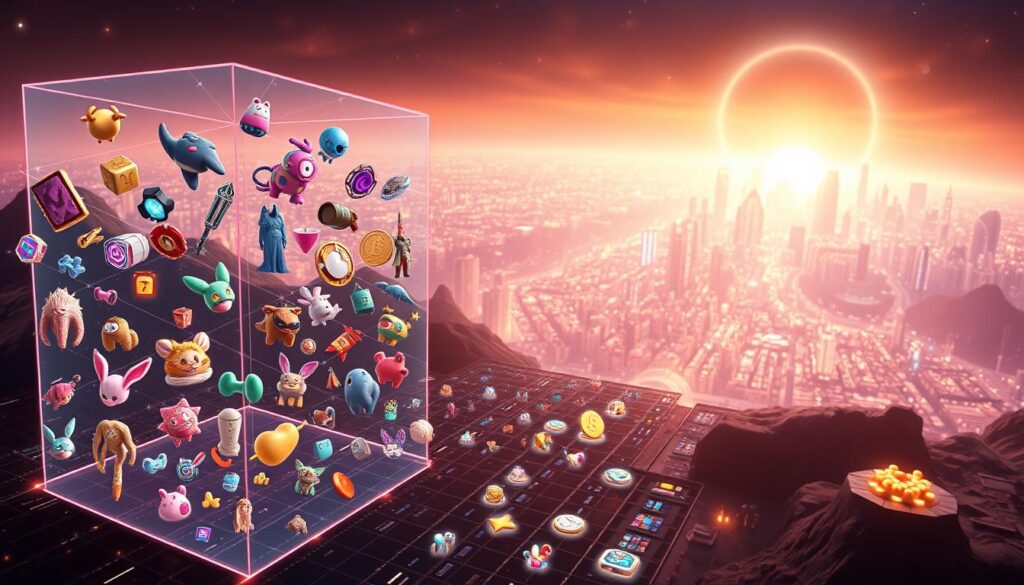Now Reading: Discover How to Flip NFTs for Profit Beginners Guide
- 01
Discover How to Flip NFTs for Profit Beginners Guide
Discover How to Flip NFTs for Profit Beginners Guide

The digital asset world continues to evolve, offering new avenues for engagement. One active strategy involves the quick purchase and sale of non-fungible tokens. This approach focuses on short-term gains rather than long-term collection.
The landscape for these unique digital items has changed significantly. Gone are the days of pure hype-driven speculation. The current environment values utility and strategic thinking.
Success now depends on understanding market dynamics and timing. It requires a clear-eyed view of what others find valuable. This is different from collecting based on personal taste.
While the market isn’t as volatile as its peak, real opportunities remain. Informed participants can still find ways to generate money. This requires preparation and a keen eye for value.
Key Takeaways
- Flipping digital assets is a short-term strategy focused on buying low and selling high.
- The current market prioritizes utility and sustainability over pure speculation.
- Success hinges on market research, timing, and understanding what others value.
- This strategy is distinct from collecting, which is often for personal enjoyment.
- Having liquid funds ready is crucial to act quickly on emerging opportunities.
- Legitimate profit potential still exists for strategic and prepared individuals.
Understanding NFTs and the Blockchain Landscape
The blockchain ecosystem has given rise to unique digital assets that cannot be replicated or exchanged equally. These tokens represent a fundamental shift in how we establish ownership and value in the digital realm.
What Are NFTs and Their Unique Features
Non-fungible tokens are cryptographic assets on a blockchain with unique identification codes. Unlike cryptocurrencies like Bitcoin, each NFT possesses distinct characteristics that set it apart.
The term “non-fungible” means these assets are not interchangeable. One token cannot be directly swapped for another of equal value. Each has its own specific worth based on rarity and demand.
Blockchain technology provides the foundation for these digital certificates. It creates permanent, tamper-proof records of ownership that anyone can verify.
Current Market Trends and Blockchain Developments
The NFT market has evolved significantly from its early days. Today’s landscape emphasizes practical utility over speculative hype. Assets with real-world applications command greater value.
Various types of NFTs now exist beyond digital art. These include music files, virtual land, gaming assets, and event tickets. Each category serves different purposes in the crypto world.
| Blockchain Network | Transaction Fees | Transaction Speed | Primary NFT Use Cases |
|---|---|---|---|
| Ethereum | Higher | Moderate | Premium art, established collections |
| Solana | Lower | Fast | Gaming assets, frequent trading |
| Polygon | Low | Fast | Emerging projects, utility tokens |
Different blockchain networks support these tokens with varying benefits. Security remains paramount across all platforms for maintaining asset integrity.
Key Factors to Consider Before Flipping NFTs
Successful digital asset acquisition hinges on a disciplined evaluation process. Not every project holds the same potential. Careful analysis separates promising opportunities from risky ventures.
Focus on these core elements to make informed decisions.
Assessing Rarity and Artistic Value
Artistic quality is a primary driver of value. Look for clean, professional execution and a distinctive style. The art should resonate with a specific audience or trend.
Rarity within a collection is equally critical. Items with unique traits often command higher prices. Tools like NFTSniff and MoonRank help identify these rare attributes.
![]()
Creator reputation adds another layer of value. Research their track record and existing following. A strong portfolio beyond a single project is a positive sign.
Evaluating Utility and Project Credibility
Look beyond aesthetics to the token’s practical use. Utility can include metaverse access, gaming perks, or membership benefits. These features create lasting demand.
The project’s community offers vital clues. A small, engaged group is better than a large, silent one. Check social media for genuine interaction.
Always review the project’s website and materials. High-quality presentation signals a serious, well-funded endeavor. When acquiring these digital assets, this research is your first line of defense.
While research is key, sometimes a genuine connection to the art or concept can reveal unexpected value.
how to flip NFTs for profit beginners guide
Establishing a solid operational foundation is the first critical step for any trader entering the dynamic digital asset space. This involves preparing your capital and utilizing the right software.
Setting Up Your Trading Fund and Tools
Always maintain a dedicated wallet with liquid cryptocurrency like ETH or SOL. This “dry powder” lets you act instantly when a good price appears.
Digital collectibles are relatively illiquid. Waiting to sell one asset before buying another means missing key opportunities.

Tools like the free Sunspot application are invaluable. You can configure alerts for specific collections, notifying you when items list below your target prices.
Data platforms such as NFTGo and Dune Analytics provide deeper market insights beyond social media sentiment.
Timing Your Transactions for Maximum Gains
Understanding market cycles is crucial. During downturns, focus on acquiring undervalued assets from proven projects.
When prices are rising rapidly, it often signals an ideal time to sell and secure profit.
A strategic approach involves the “rule of three.” If confident in a project, buy three tokens. Sell the first to cover costs, the second to take profits, and hold the third for potential long-term growth.
This method helps manage risk and emotions, defining the purpose of each asset before purchase.
Effective Research and Analysis Techniques
Successful NFT analysis combines technical data with social sentiment tracking. This dual approach reveals genuine opportunities that others might miss.
Professional data analysis platforms provide critical market insights. Tools like NFTGo and Dune Analytics track volume trends and holder activity across different collections.
Leveraging Data Analysis Tools and Social Media Trends
Social media platforms, especially Twitter, offer real-time sentiment indicators. Monitor discussions about specific themes like anime or ape collections.
This chatter often signals rising demand before price movements occur. Specialized tools like NFTSniff and MoonRank help evaluate trait rarity within these popular collections.
The key distinction lies in separating personal taste from market preference. Successful trading requires buying what others value, not necessarily what you enjoy.
Combining these research methods creates a comprehensive view of an asset’s potential. For deeper insights into market dynamics, explore this complete NFT analysis guide.
Navigating NFT Marketplaces and Platforms
Marketplace selection directly influences transaction costs, speed, and access to different digital collections. Each platform serves distinct audiences with varying fee models and blockchain support.
Your goals determine which environment suits your strategy best. High-frequency traders need different features than art collectors.
Overview of Leading NFT Marketplaces
OpenSea dominates the space with support for Ethereum and Polygon networks. It charges a 2.5% fee per sale and offers zero gas fee minting.

Magic Eden serves multiple chains including Solana and Bitcoin. This marketplace has no listing fee and a low 2% trading commission.
Rarible operates similarly to OpenSea with a 2.5% commission. Its unique DAO governance gives community members voting power.
SuperRare focuses on high-quality curated art. It charges 15% on initial sales and 3% buyer-side fees, attracting serious collectors.
Blur has become the professional’s choice for Ethereum-based trading. This platform offers 0% marketplace fees and a lightning-fast interface.
Choosing the Right Platform for Your Goals
Consider blockchain specifications like transaction speed and gas costs. Security features and token standards also matter greatly.
Platform reputation and cross-chain capabilities affect long-term viability. High-volume traders often prefer Blur’s efficiency.
Art collectors might find SuperRare’s curated approach more valuable. Each marketplace serves a specific segment of the crypto ecosystem.
Your strategy should match the platform’s strengths. This alignment maximizes opportunities while minimizing unnecessary fees.
Risk Management and Long-Term Investment Strategies
Effective portfolio management in the NFT space demands strategic risk assessment. The digital asset market experiences dramatic swings, with total values changing over 60% daily. This volatility requires disciplined approaches to protect your capital.

Managing Market Volatility and Liquidity
Liquidity challenges present significant obstacles during downturns. Some digital collectibles see very few sales when demand decreases. This can leave holders unable to exit positions at desired price points.
Common scams include rug pulls and wash trading schemes. Phishing attacks target private keys through social engineering. Intellectual property theft occurs when artists’ work gets tokenized without permission.
Never invest more than you can afford to lose completely. This fundamental rule protects against the market’s unpredictable nature. The largely unregulated space carries higher risks than traditional investments.
Diversification and Exit Strategies
Spread investments across multiple collections and artists. Different blockchain networks and asset types further reduce exposure. This diversification strategy minimizes impact from any single project’s failure.
Establish clear exit strategies before purchasing assets. Set predetermined profit targets and stop-loss thresholds. This prevents emotional decision-making during market swings.
Secure private keys and wallet credentials with extreme care. Blockchain’s decentralized nature means lost access cannot be recovered. Proper security measures ensure long-term asset protection.
Watch for warning signs like anonymous teams and unrealistic promises. Artificial social media engagement and lack of transparency indicate problematic projects. Thorough research remains your best defense against poor investments.
Advanced Tips for Increasing NFT Profit Potential
Sophisticated traders leverage multiple revenue streams beyond basic buying and selling. These advanced strategies can significantly enhance returns while managing risk exposure.
Understanding the full ecosystem of money-making approaches separates casual participants from serious investors.
Maximizing ROI with NFT Royalties and Staking
Royalty mechanisms embedded in smart contracts create ongoing income potential. Each secondary market sale typically generates 5-10% for the original creator.
Realistic expectations are crucial since most collections generate minimal royalty income. Staking protocols transform static digital assets into productive holdings.
Platforms like Unifty and Muse allow locking tokens for cryptocurrency rewards. This creates passive income while maintaining ownership of valuable digital tokens.
Engaging with Communities and Following Trends
Active participation in Discord servers and Twitter spaces reveals emerging opportunities. Building reputation within these groups provides early access to promising projects.
Monitoring social media conversations helps identify rising trends before they become mainstream. This proactive approach often leads to discovering undervalued assets.
Combining these strategies creates a diversified approach to generating returns. The most successful participants use multiple methods simultaneously for maximum profit potential.
Conclusion
Building wealth through digital collectibles requires a balanced approach of analysis and intuition. The landscape for these unique assets continues to offer real opportunities in 2025.
Thorough research and smart risk management form the foundation of sustainable success. Never commit more money than you can afford to lose completely.
Start with smaller investments to gain experience before scaling up. This measured way builds confidence while minimizing potential losses.
Sometimes unexpected projects deliver surprising returns. Stay engaged with the community and trust your informed instincts. The right time and approach can lead to genuine profit in this dynamic market.
FAQ
What exactly is flipping NFTs?
Flipping NFTs is a trading strategy similar to real estate flipping. You buy digital assets at a low price and aim to sell them quickly for a profit. This approach relies on identifying undervalued NFTs before they gain wider market demand.
How much money do I need to start flipping NFTs?
You can start with a modest amount. The key is not the initial capital but smart research. Many successful flippers begin by focusing on affordable collections on platforms like OpenSea or Magic Eden, reinvesting profits to grow their trading fund over time.
What are the biggest risks involved in NFT flipping?
The primary risks include high market volatility and sudden price drops. Liquidity can be low, meaning you might not find a buyer quickly. There’s also the risk of investing in projects with weak communities or low credibility, which can lead to losses.
Which NFT marketplaces are best for beginners?
OpenSea and Blur are popular choices for beginners due to their large user bases and extensive collections of tokens. These platforms offer user-friendly interfaces and tools for tracking prices and rarity, making them ideal for starting your trading journey.
How important is an NFT’s rarity for its value?
Rarity is a critical factor. NFTs with unique traits or low edition numbers within a collection often command higher prices. Using tools like Rarity Sniper or Trait Sniper can help you assess an asset’s rarity score before buying, which is crucial for profit potential.
Can I make a long-term career from flipping NFTs?
While some traders achieve significant success, it requires constant research, risk management, and adapting to crypto trends. Viewing it as a side hustle initially is wise. Long-term success depends on building a diversified portfolio and understanding broader blockchain developments.












